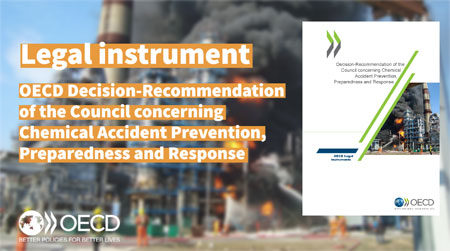Chemical safety and biosafety

OECD Guiding Principles for Chemical Accident Prevention, Preparedness and Response - Third Edition
Chemical accidents with serious consequences continue to happen in OECD Member countries
and worldwide. Over the past decades, successive major accidents have caused deaths,
injuries, significant environmental pollution and massive economic losses – from the
hydrogen fluoride leak in Gumi (Korea) in 2012, the ammonium nitrate explosion in
West, Texas (United States) in 2013 or, recently, the blow-up of a chemical facility
in Tarragona (Spain) and the explosion at the port of Beirut (Lebanon) in 2020, and
the blast in Leverkusen (Germany) in 2021. This third edition of the OECD Guiding
Principles for Chemical Accident Prevention, Preparedness and Response provides guidance
for the safe planning and operation of hazardous installations. It aims to support
public authorities and industry in taking appropriate actions to prevent chemical
accidents and to mitigate impacts of accidents that do nevertheless occur. These guiding
principles apply to fixed installations at which hazardous substances are produced,
processed, handled, stored, used or disposed of, in such a form and quantity that
there might be a risk of occurrence of a chemical accident. These guiding principles
constitute the technical guidance supporting the implementation of the Decision-Recommendation
of the Council concerning Chemical Accident Prevention, Preparedness and Response
adopted in 2023.
Published on June 16, 2023
In series:Series on Chemical Accidentsview more titles
TABLE OF CONTENTS
| Foreword | |
| Editorial | |
| Reader’s guide | |
| Golden Rules | |
Powered by OECD iLibrary
 A new
A new